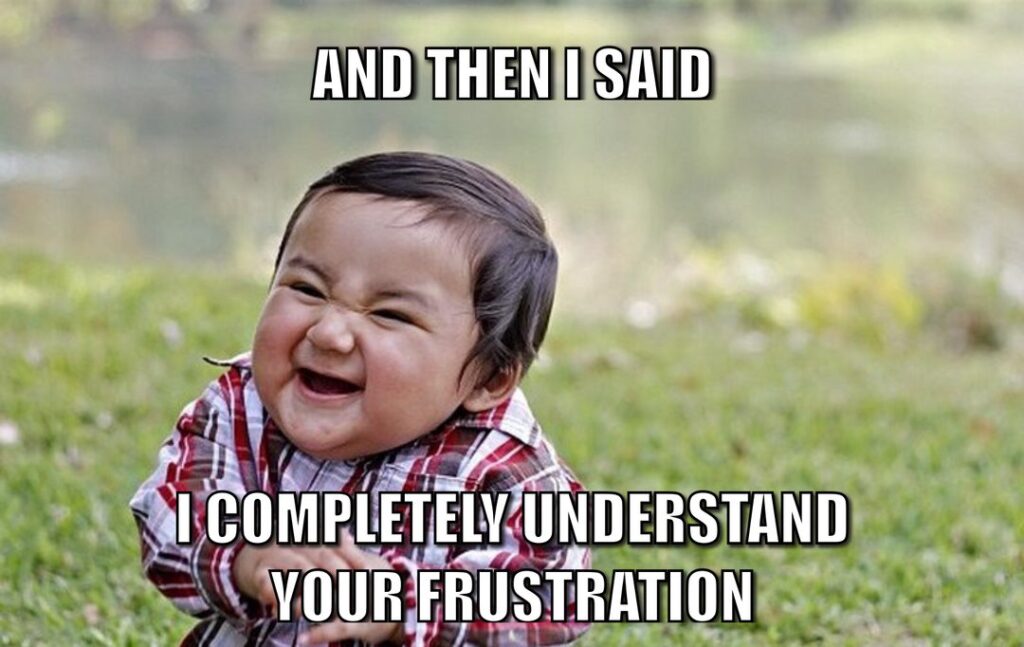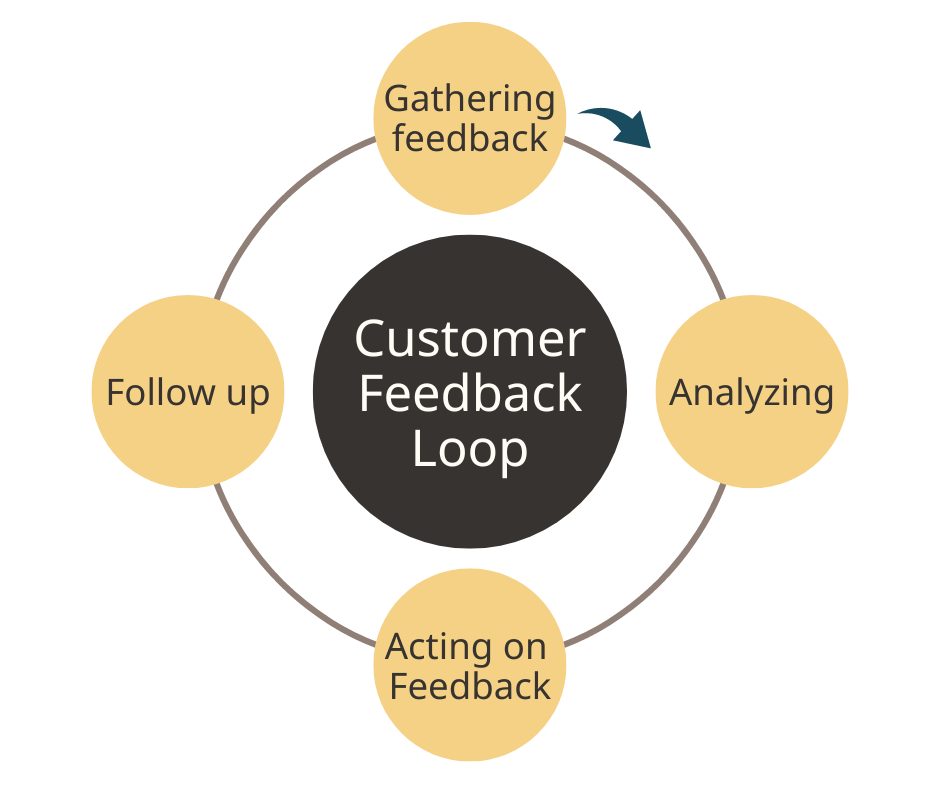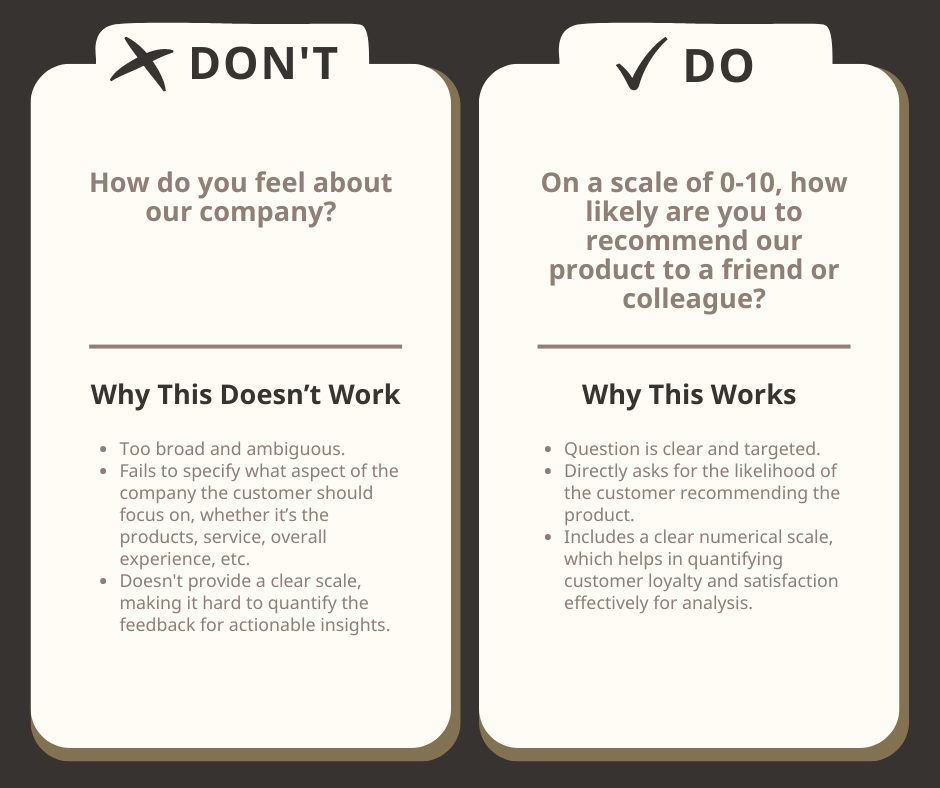Mastering Customer Feedback Strategy: Essential Steps to Enhance Your Business and Service Quality

Last updated on July 5, 2024
Customer feedback is a direct line to how your customers feel about your organization, its products and services. It’s one thing to believe your products are the best in the business, but if they’re not meeting your customer’s needs, you might as well be selling pie in the sky. Customer feedback analytics are invaluable to help you discover problems, make changes, anticipate what they want, and, best of all, give them more of what they love.
These reactions to your products and services are critical data points to help you gain insights to inform your business strategy. However, good quality customer feedback is only gained from a well-structured and targeted customer feedback strategy.
Knowing what your customers want and understanding how to keep them happy not only maintains customer satisfaction, but also helps you grow your business as word spreads that your products, services, and customer service is totally on point.
So, what constitutes a good customer feedback strategy? Let’s find out.
In This Article:
Understanding Customer Feedback Strategies
Imagine having x-ray specs to see inside your customers’ minds so you can discover what they really think about your products, services, and business. A well-structured customer feedback strategy achieves this. Ask the right questions, and you can gain valuable insights to help inform your strategy and keep your consumers happy.

A strong feedback strategy involves collecting and analyzing feedback to improve your products and services. For instance, you can get feedback to ensure your website meets your customer’s needs. Alternatively, it can help you keep your pricing competitive, identify issues with product delivery, and customer service, and help you understand how your brand stacks up against the competition.
In short, developing a good customer feedback strategy helps you understand what you’re doing well, where you need to develop, and how to improve your service to grow your business ultimately.
How to Optimize Your Customer Feedback Strategy
Your customer feedback strategy is nothing without gathering feedback. There are several forms your data collection can take. For example, customer feedback surveys are an excellent way of gathering details on how customers feel about your products and services.
These can be psychographic survey questions or simple yes/no questions. Surveys can take different formats. Email surveys, website pop-ups, live chat functions, telephone surveys, online forms, and text messages are the most common.
When devising your customer feedback strategy, consider who your customers are. Would they prefer to answer a survey via a mobile device or phone call? To maximize the responses you get, provide your consumers with the proper channels to answer the survey, and don’t make it too long.
It can help to play the role of the customer yourself. Consider whether your questions allow them to express their thoughts about the products or services thoroughly. Ensure the survey will enable customers to select options and provide free text comments clearly and logically. Also, the survey’s functionality should be tested to ensure that it is user-friendly and fit for purpose.
The type and format you choose may depend on your business sector, brand, customers, and precisely what you want to know.
For example, online clothing stores often have a short pop-up survey asking customers to comment on whether they found the style, size, and type of item they were looking for. Similarly, a company providing a VoIP phone service like Dialpad may enquire about the call quality and usability of the system.
Another consideration is whether your survey will be limited or extensive. The scope of your questions will depend on whether you’re looking for specific information in one particular area or trying to gain more generic data, which you’ll sort through and make observations about once it’s been gathered.

Creating an Actionable Feedback Plan
Your feedback strategy should be coordinated, coherent, and carefully crafted. In a sense, it should be as precisely worded as a contract, and just as you might benefit from enterprise contract management software, it can be worth looking at your competitors’ surveys and some survey templates to get a feel for how to put yours together. Here are some important bases to cover:
Importance of Clarity in Customer Feedback Surveys
The most important thing to remember is that good answers can only be provided if you ask the right questions. By this, we mean clear, specific, and targeted questions.
Vague questions produce vague answers. For instance, if you want to know what customers think of a new product, think carefully about what product features you should ask about. Does the design, style, quality, or cost matter to you? Pose your questions in a manner that focuses the customers’ minds on the relevant aspect of your product.

In addition, don’t overload customers with complex questions that attempt to answer several things simultaneously. Target one thing at a time; don’t confusingly cluster topics.
For example, ask: How satisfied are you with the quality of the Patreon Telegram Bot integration? Rather than: Is the Patreon Telegram Bot integration good quality and value for money?
Vary the Questions
Varying the different types of questions you ask helps you gain different information. For example, open-ended questions will give you different outcomes than closed questions. Yet, both questions are valuable in various ways. Again, it will depend on the answers you hope to gain.
Closed questions, which supply a yes/no or simple answer, help make comparisons. Data gathered from these questions can show concrete percentages you can put in a spreadsheet or chart and see clearly.
Open-ended questions, however, can provide more nuanced information that requires more effort to analyze and process. Nonetheless, answers to open-ended questions can effectively show tendencies and general themes.
A solid customer feedback strategy usually includes a combination of both types of questions. For instance, a closed question could be: Would you shop with us again? Meanwhile, an open-ended question could be: Can you tell us what you think of our visual voicemail service?
Maintaining Consistency Across Survey Questions for Clear Insights
If your questions require your customers to rate a product, service, or your business itself, be consistent and logical with the options you provide. Having smiley faces on one part of the survey makes no sense, but words, numbers, or percentages on another.
“Consistency in survey design not only helps in maintaining the integrity of the data but also respects the respondent’s time and effort. When customers see a consistent format, they engage more thoughtfully, providing more reliable and actionable insights.”
— Shep Hyken, Customer Service Expert and Chief Amazement Officer at Shepard Presentations
Similarly, the format of the questionnaire should be consistent too. Asking customers to click on one question but tick, circle, or select from a drop-down list in another is messy and confusing. Moreover, it will make the data you collect harder to process and compare.
If you have to vary the format, group similar formats into groups so that the responses can be compared easily. At the same time, consumers see the logic behind the survey layout.
Never Forget To Ask to Follow Up
It is essential to ask customers if you can follow up. It’s better to establish this when the consumer is surveying since they’re far more likely to give permission at this stage than if you ask them later.

Okay, perhaps don’t follow this meme, but following up on survey questions can help you gain deeper insights into the questions you’ve asked. You can also be selective and follow up with consumers who have provided the most helpful information. For example, you might want to gain more detail in response to negative feedback to help you fix the problem.
Be open to contacting customers via their preferred method. Some customers may be open to a video call or a quick chat via your Canadian business phone number. Meanwhile, others would be happier with a follow-up via email or SMS.
Creating actionable steps based on different types of customer feedback
Once you’ve collected your customer feedback and generated insights from the data, it’s time to prioritize your response.
Look at your customer’s suggestions. Is there anything that chimes with ideas you’ve considered before? Are there any surprising but revealing insights? Are there any repeating patterns? Pay particular attention to these; recurring themes, comments, or answers are usually the most illuminating.
Crunch the numbers and convert the responses into hard figures. What are the numbers telling you? Is a new product popular or failing to hit the mark? Are customers planning on using your services again, or do they prefer a competitor? Do they want access to something like a PayPal transfer Telegram integration? Convert this data into actional plans for your business.
The right customer feedback analysis tool can help quickly identify the chief drivers impacting your CX metrics. Understanding these drivers – the items that have the most significant impact on your NPS and CSAT – allows you to spend less time on analysis and more time on improving your product and customer experience.
If your current CX tool stack doesn’t make this easy, try using a feedback prioritization matrix to determine where you should take action. A prioritization matrix scores possible actions you should take based on two criteria:
1) The potential value for your business
2) The complexity or level of effort involved
Each potential actionable step’s place on the matrix shapes your decision to move forward. Every business has limited resources, meaning you must choose how to spend your time and money.
For example, your customer feedback shows a strong appetite for improvement in your email marketing tools. However, there’s an equally strong appetite for a brand-new reporting feature.
How do you decide which projects to work on?
If the new feature requires more effort (because it’s a brand-new development) and delivers less value (because your core product is your email marketing capability), it becomes easier to deprioritize that initiative.
Similarly, customer feedback can help guide your business in a different direction. It might lead you to change your customer service procedures, find ways to drive more traffic to your online store through an affiliate marketing template or take a hard look at pricing.
While a feedback prioritization matrix doesn’t identify the key drivers of your customer experience in quite the same way as a CX tool, it’s still a potent tool in your customer feedback strategy.
Emerging Trends in Customer Feedback
Recent trends in customer feedback strategies include embedding AI technologies to automate manual data collection and analysis services to help businesses gain actionable insights faster.
With 83% of customers feeling loyalty towards companies that respond to and resolve their concerns and 78% of customers having a more favorable view of brands that actively seek feedback, acting on customer feedback is paramount to businesses wishing to increase customer retention rates, attract new customers, and grow.
AI chatbots are becoming increasingly widespread as a customer feedback tool, allowing customers to interact in real-time to have common queries resolved quickly. In addition, customers can use free text bots to provide feedback, which is then analyzed by AI technology employing machine learning, natural language processing, and sentiment analysis to extract valuable data, analyze it, and provide actionable insights.
Similarly, AI analysis tools allow businesses to look into enormous datasets quickly, extracting valuable data that helps inform an organization’s CX activities and broader product and service strategy.
AI technologies are likely to play an increasingly important role in the CX industry, meaning that businesses that embrace early adoption of AI to help inform their customer feedback strategies can gain a head start on their competition.
Best Practices in Customer Feedback
Proactivity is the watchword when collecting customer feedback. Actively encourage customers to share their thoughts through reviews, social media, and, most importantly, feedback surveys.
Understanding how to design your customer feedback surveys to gain maximum insight is essential.
Begin by identifying the end goal. What is it you want to find out from your customers? Is it feedback on a new product or service or do you want to understand what your customer prefers? Understanding this will help you decide who you need to interview and the questions you need to ask.
In addition, keep simplicity in mind when designing your survey. Quick, concise surveys will maximize response rates and make analyzying the result a fast, simple exercise. Beware of survey fatigue and keep questions relevant.
Avoiding bias is also an essential part of designing a survey. Questions shouldn’t lead participants towards a particular answer, nor should the answer to any question be influenced by previous questions or statements made in the survey.
Finally, optimize your survey to gain the best possible insights. In most cases, you be able to solve a question with a KPI and a “Why” question. For instance, by asking “How satisfied are you with our website, and why?” you can quickly understand customer sentiment towards your online footprint, while also gaining valuable insight about what they do and don’t like about it.
Remember that collecting pointless feedback that adds no value serves little purpose. Take time to structure your surveys to ensure you only collect helpful and valuable data and see it as an opportunity for your business to mature and grow.
Conclusion
It can be challenging to take the plunge and be prepared to find out exactly what customers think of your brand and what it offers. However, a clear picture of your organization’s offerings can only benefit your business.
Ultimately, the aim of gaining feedback and having an effective customer feedback strategy, like using HubSpot integrations, is to grow your business and boost sales. However, a customer survey needs to be well planned to reach this goal, and how your customers will respond is anticipated.
The phrase, knowledge is power may be overused, but it’s very appropriate when it comes to receiving customer feedback. A good customer feedback strategy will give you the information you need to nip problems in the bud and strengthen and grow your business. Think you’re ready for moe customer feedback strategy? Check out our webinar on ‘The future of Customer Surveys (and how to prepare for it)‘ and learn a thing or two in enhancing your strategies in gathering customer insights.
